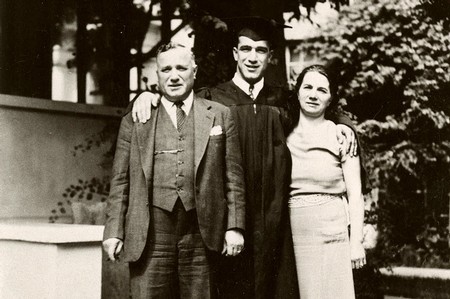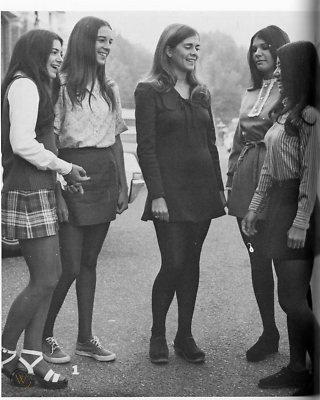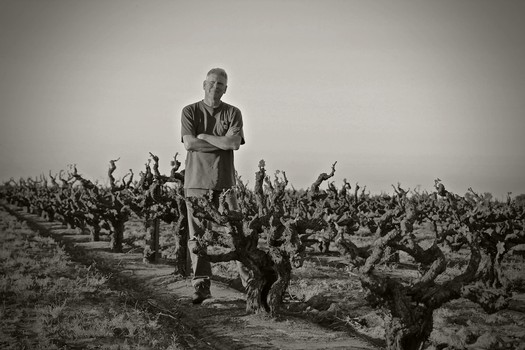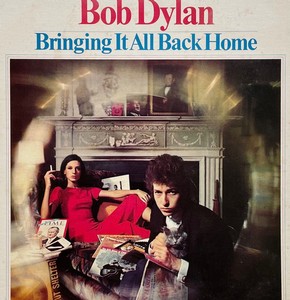MONDAY, MAY 29, 2023. BY RANDY CAPAROSO.
Featured Image: Faces of the Lodi wine industry today: Melinda Kearney (middle) going through her handcrafted old vine cuvées with her Lorenza Wine partner Michele Ouellet Benson (right) and winemaker Bree Serpenti (left).
I started out on Burgundy but soon hit the harder stuff. Not really. But I always loved that line from Bob Dylan‘s song, “Just Like Tom Thumb’s Blues.”
As it were, after over 45 years in the wine business, wines made from Pinot Noir, the black-skinned grape of Burgundy in France, remain some of my favorites. Why? Because Pinot Noir usually produces a softer, silkier, fragrantly spiced red wine. I drink it when I’m feeling fancy, or eating fancy (like filet mignon or rack of lamb).
For everyday drinking, though, I prefer good ol’ California Zinfandel, which also tends to be soft, spicy, and fragrant, only a little zestier than Pinot noir-based reds. More like spaghetti wines, but who doesn’t love spaghetti? If Zinfandel also had caffeine and tasted good when hot, I’d probably drink it for breakfast with cereal. Over this past weekend I enjoyed Zinfandel with a spiced sausage ragù and soft polenta (here’s a good recipe for this classic dish, in which you can substitute a spicier sausage to zoom in on any Zinfandel’s peppery umami profile). Life is good when Zinfandel is in it.
True Burgundy comes from a specific region of that name in France. Back in 1981, when I penned my first-ever newspaper column for my hometown newspaper, The Honolulu Advertiser, the “Burgundy” most familiar to Americans was the cheap, easy, and at best inoffensive red-colored wine bottled in inexpensive “jugs.” You could buy squat 1.5-liter bottles of “Burgundy” by brands such as E. & J. Gallo, Paul Masson, Inglenook, or Almadén for as little as $2.99. To the eternal horror of the French, California-grown Burgundy never contained a drop of wine made from actual Pinot Noir, the required grape of France’s Burgundy.

1972 Time magazine cover story celebrating California wine and E. & J. Gallo’s Hearty Burgundy, in which Los Angeles Times wine critic Robert Balzer proclaimed, “Gallo Hearty Burgundy is the best wine value in the country today.”
Many old-timers can still recall when Robert Mondavi “came back” to Lodi. Mr. Mondavi originally moved to Lodi with his family during the early 1920s, graduating from Lodi Union High School. His father, Cesare, made enough money in the Lodi winegrape packing industry to send all four of his kids to Stanford. The family later purchased a defunct winery in Napa Valley called Charles Krug, which Robert and his brother Peter resuscitated and operated together until the mid-’60s, when Robert founded his seminal Robert Mondavi Winery.
While Mondavi’s eponymous Napa Valley brand swiftly took the wine world by storm for its premium quality varietals—such as Cabernet Sauvignon, Sauvignon Blanc (sold by the Frenchified name, Fumé Blanc), as well as Chardonnay and Pinot Noir—Mr. Mondavi himself always believed that California was capable of producing the world’s finest wines for everyday drinking, or what the French might call vin ordinaire. But he didn’t think it was possible to do this in Napa Valley.

1937 photograph of Robert Mondavi (center) with his parents, Cesare and Rosa Mondavi, celebrating Robert’s graduation from Stanford University. Cesare and Rosa lived in their W. Pine St., Lodi home until their passing in 1959 and 1976. UC Davis Library.
Therefore, in 1979, Mondavi purchased the old Cherokee Vineyard Association cooperative winery East of Hwy 99 in the Lodi area hamlet of Acampo. He renamed the facility Woodbridge because it was located on Woodbridge Road (not actually in the community of Woodbridge on the other side of the City of Lodi), and today wines coming out of there are bottled under the Woodbridge by Robert Mondavi label.

Mid-1980s bottlings of “Bob Red” in magnum (i.e., double-bottle) sizes, produced from Lodi-grown winegrapes.
These “Bob” wines were blends of multiple winegrapes, just like the generic Burgundy and Chablis wines popular in the day. Mr. Mondavi emphasized the fact that these were “table” wines because he wanted consumers to think of them as wines meant for daily consumption, belonging on the table with food. He often talked of his dream of Americans adopting the gastronomic wine cultures of Europe, while obviously wanting to get away from borrowing European place names for wine labels.
Because he wanted to get away from the presumably less noble “jug wine” image, he packaged these 1.5-liter bottles in cork-finished magnums (double-sized bottles), forcing countless Mondavi customers across the country to lower the top shelf of their refrigerators to accommodate the extra-tall bottles of white or rosé.

2009 Ad for Woodbridge by Robert Mondavi Winery Cabernet Sauvignon with a vintage photo of Robert Mondavi exhorting his winegrape growers.
Mr. Mondavi and his team also began exhorting the local growers in Lodi to plant the same winegrapes that were being successfully sold under the Robert Mondavi varietal labels sourced from Napa Valley: Cabernet Sauvignon, Chardonnay, Sauvignon blanc, and even Pinot Noir and Merlot (before Mondavi returned to Lodi, Merlot did not exist in Lodi vineyards—in fact, it was practically nonexistent in Napa Valley as well). As a sign of the times, the Napa Valley Robert Mondavi brand also produced a Chenin Blanc and Zinfandel (both varietals dropped by the winery by the mid-1990s).
Soon after, by the mid-1980s, many California wineries also began to successfully sell varietal wines such as Cabernet Sauvignon, Chardonnay, and (by the late 1980s) White Zinfandel for as little as $2.99 to $4.99 per 750-ML bottle. You can say that Mr. Mondavi’s dream of California producing the “finest everyday wine in the world” was coming to fruition. And it is true—the varietal bottlings of the ’80s were far more appealing than the generic Burgundy and Chablis wines of the previous decades, and these wines are even better today.

1946 Ad for Roma Muscatel, selected “from the world’s greatest reserves of fine wines,” which at the time were grown and produced in Lodi.
And that, in a walnut shell, is how Lodi quickly grew to become the largest producer of premium winegrapes in the country—growing as much winegrapes as regions such as Napa Valley and Sonoma County, or all of Oregon and Washington, combined. No other American appellation comes close. Mr. Mondavi was not just a visionary, he also had far more common sense than the average vintner. He knew the Lodi AVA has a natural climate and exceedingly grape-friendly soils perfect for growing premium quality winegrapes, yet can produce grapes for considerably less cost than more coastal California wine regions.
Lodi, of course, also had lots of Zinfandel—since the 1800s, nearly half of all the Zinfandel planted in California—which enabled the region to sustain the popularity of soft, pink, off-dry White Zinfandel for a good twenty or so years (nowadays most of Lodi’s Zinfandel winegrapes goes into red wines).

Photograph from the 1973 Lodi High School Yearbook, depicting students who would be among today’s younger boomers, now in their mid-60s. worthpoint.com.
In recent years the wine industry has been in something of a collective befuddlement over how to get younger generations—consumers in their 20s and 30s—to purchase wine with as much commitment or gusto as previous generations. Especially boomers, who continue to anchor the wine market in general. The problem is, the youngest boomers today have already hit their 60s—who knows how long the old folks can keep consuming the most wine, thus keeping most of the domestic wine industry afloat? At least for now.
We’ve been hearing it said that part of the problem is that today’s wines are expensive. Well, it’s true, many of these well-heeled boomers and Xers (the latter group, now in their 40s and 50s) are consuming $50, $100, and $200 wines like it’s nothing. Still, the fact is that there are far more choices of wines priced between $5 and $15 than ever before. Certainly far, far more value-priced brands and bottlings than what boomers were offered 40, or 50 years ago.
The reality, it is clear, is not that wines are expensive, but that younger generations don’t have to drink wine at all. They have choices. There is something like twenty, or thirty times more brands of beers than there were 40, or 50 years ago, found on every store shelf in the country. Younger consumers are also gobbling up hard seltzers, ciders, liquors, and pre-bottled cocktail mixes in seemingly every iteration imaginable. When they were in their 20s, today’s boomers had a choice of Lancers, Mateus, Blue Nun, Miller Lite, or, if they really wanted to live it up, Robert Mondavi Cabernet Sauvignon. The younger generation is spoiled rotten when it comes to the sheer variety of adult beverages.
Fine wine, however, still has something none of the other alcoholic products have: They have more of a sense of artistry combined with a pervasive sense of nature, or what comes organically with Mother Nature‘s blessings. Yes, you can get the buzz of alcohol-consuming wine, but the variations of finer wines are such that they also perk the mind, or stimulate the intellect and natural curiosity. We are, after all, thinking animals. We have the option of choosing to consume beverages for reasons beyond simple satiation or inebriation. Good wine does that in spades.
Where nature comes in is the fact that the finest wines still vary from vintage to vintage simply because they are made from winegrapes, and winegrapes grow differently each year, depending upon where they’re grown. Vintners, working hand in hand with nature, still have endless options on how to cultivate winegrapes and how to turn those grapes into wines. Therefore, the finest wines of all end up having some kind of distinct sense of time and place—specific sensory qualities that reflect origins, such as a season, a region, an appellation, or a specific vineyard.
Such as a Lodi-grown wine. Even the most commercialized Lodi appellate reds tend to be softer and fresher fruit-forward than red wines from other American wine regions, simply because Lodi has a quintessential Mediterranean climate conducive to that style of wine. Lodi’s white wines are also aromatic with fruit qualities, yet are light and crisp because Lodi summers have cool enough nights to help grapes retain fresh fruit acids. This is what the French, who originated much of the language used to describe fine wine, have always called a “sense of place.”

m2 owner/winemaker Layne Montgomery in his favorite old vine Zinfandel block, Soucie Vineyard, planted on Lodi’s west side in 1916.
The beauty of the whole thing, of course, is that wine consumers have nearly endless choices. If they prefer wines that are, generally, less overtly fruit-focused and more earthy or minerally, there is a nearly endless variety of European imports to choose from. If you prefer California wines that are fuller-bodied and denser in texture, you can generally find those qualities in products grown in Napa Valley or Sonoma County, especially those made from grapes such as Cabernet Sauvignon or Merlot. If you prefer lighter or finer textured reds, there are always Pinot noir-based bottlings from cooler climate zones in California’s Central Coast or Oregon.
I believe it was the legendary (even if nearly forgotten) British wine journalist named André Simon who once that we can all have good taste, but not necessarily the same taste. Think of good wine as being like music or art; or food, since wine is like a food in that it goes down the hatch. Not all of us may like broccoli or brussel sprouts, just like not all of us may like White Zinfandel or red Zinfandel, Dalí or Dylan, Puccini or Pollock, Emily Brontë or Emily Dickenson. We’re often told what’s supposed to be “good” for us, or what presumed experts tell us is good, but choosing what we actually prefer has always been a personal choice. We choose the wines we prefer just like we choose our books, our food, the fashions we wear, our music and movies, or anything else falling somewhere within the realm of artistic or highly personal preferences.
Wine, in fact, may still be a “mystery” to many consumers. I take that as a positive—a help, not a hindrance. It is good, after all, to have mysteries in our lives. Things to investigate further, and to discover to our great joy and illumination. Otherwise, everyday life would be pretty boring, wouldn’t it?
But ultimately, good wine is really something very, very simple. We either like it or we don’t. If we like a wine, then we buy more of it. If we want a variation of what we like, we look into wines that are different yet similar. Eventually, we all come to refine our predilections. Many of us prefer our wines light and smooth, whereas many of us prefer them heavy, rough, or somewhere in between. Knock yourself out, it’s your taste. Don’t ever let someone else tell you what’s good for you.
As for me, I’m going back to New York City, I do believe I’ve had enough. I’m not exactly sure of what that means, but Bob Dylan once sang that as well, and it still sounds pretty good—the sound of music being as important as the feel of a wine, even if mysterious or unfathomable. Enjoy your wines… enjoy your life!
Randy Caparoso is a full-time wine journalist who lives in Lodi, California. Randy puts bread (and wine) on the table as the Editor-at-Large and Bottom Line columnist for The SOMM Journal, and currently blogs and does social media for Lodi Winegrape Commission’s lodiwine.com. He also contributes editorials to The Tasting Panel magazine, crafts authentic wine country experiences for sommeliers and media, and is the author of the new book “Lodi! A definitive Guide and History of America’s Largest Winegrowing Region.”
Have something interesting to say? Consider writing a guest blog article!
To subscribe to the Coffee Shop Blog, send an email to stephanie@lodiwine.com with the subject “blog subscribe.”
To join the Lodi Growers email list, send an email to stephanie@lodiwine.com with the subject “grower email subscribe.”
To receive Lodi Grower news and event promotions by mail, send your contact information to stephanie@lodiwine.com or call 209.367.4727.
For more information on the wines of Lodi, visit the Lodi Winegrape Commission’s consumer website, lodiwine.com.
For more information on the LODI RULES Sustainable Winegrowing Program, visit lodigrowers.com/standards or lodirules.org.









